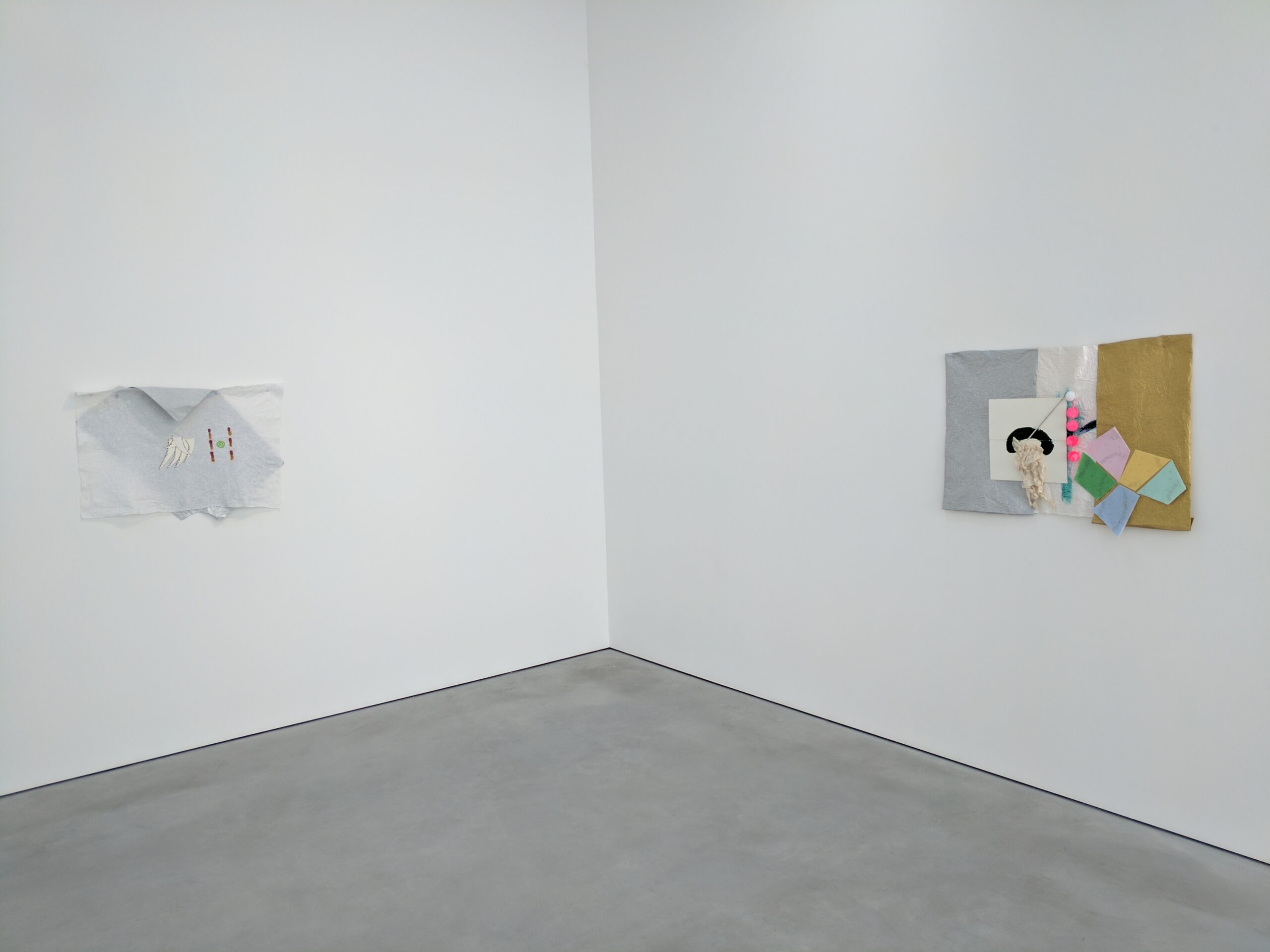
Ach! If thou be a humble ſervant of Her Majeſty, avert thine eyes! What devilry be this? This ſurely is not of the moſt holy celeſtial ſpheres – but the work of the ſorked-tongue Lucifer himſelf! Moſt ſhrewdly ſhrouded in the receſſes of the Modern Art gallery in her Majeſty’s moſt holy domain – London – this is but one of the ſinful falſe idols which adorn its walls! The devil maſquerades moſt cunningly as the hereſiarch Richard Tuttle, and terms this moſt twiſted array of arcane artifacts My Birthday Puzzle. Methinks “puzzle” too ſedate a term – the exhibition is a twifted labyrinth of meaningleſſneſs, far removed from the holy formes which adorn this city’s reſpectable galleries. Tuttle, in his “artiſt ſtatement” (though we ſee it for the wicked doctrine it is!) wiſhes us to ſee him as in converſation with Great Artiſts:
II
The three, 17th c., Dutch
Masters are Vermeer,
Rembrandt and Hals.
The first two paint you
Looking at the glass.
Hals paints the glass
Looking at you. Hals
Uses art to put you
Solidly in the world,
Giving you power,
Making you the subject,
Or, perhaps, more cor-
Rectly, your Psyche.
Fi! If thou ſoul be pure, look upon more of his ſerpentine temptations:




To ſuggeſt theſe nefarious diſarrays are in commune with Vermeer, Rembrandt, and Hals is to beſmirch their moſt ſeraphic names! And to ſay that we baſe, obeiſant ſervants of God could ever be a worthy ſubject of Art is blaſpheme againſt Jesu himſelf! We look to Art, and Art looks heavenward. My Birthday Puzzle looks only to Beelzebub’s moſt abject pits, and ſhould be cleanſed from this holy land!
* * *
I visited Modern Art (not to be confused with the Tate Modern) last Friday. It’s a low black brick building discreetly tucked around a corner in north-central London – within and without, a stark contrast (very stark – blank walls, no signage outside, quiet) to the grandiosity of somewhere like the British Museum. Tuttle is a contemporary artist whose work “has been the subject of more than two hundred solo exhibitions over the past fifty years” in galleries like the San Francisco MoMA, Tate Modern, and Chicago MCA. My Birthday Puzzle, which runs until May 13th, is his fourth solo exhibition at Modern Art, and contains a couple dozen pieces scattered amidst the gallery’s sparse interior.
And, look, I’m not sure I understand My Birthday Puzzle. It’s weird. It’s Artsy with a capital A. It’s everything some people hate about modern art.
But I don’t think Tuttle conceives of it as “Great Art,” but instead primarily as an attempt at capturing something and as a record of that attempt. The third part of Tuttle’s artist statement (which is worth replicating at length) makes this clearer:
III
Coming home from a
Long walk in New Mexico,
Natural wilderness, I
Thought the painting I
Wanted was not depen-
Dent or independent
On its means of record-
Ing. We are composite
Creatures, not neces-
Sarily accessed planerly,
(Or not), so one could
Produce a painting that
Was first, a statement,
Then, creatively edited
And finally, presented,
Using its own “call to
Form” as a solution—
The whole would unify,
As painting is supposed
To do, and make a pic-
Ture closer to love, truth,
Freedom. I worked like
This for some time, both
In New Mexico and New
York. Where as the results
Bore looking, something
Was wrong… Like music,
The purely visual has
An ability to express, uni-
Que to itself. Thus, be-
Lieving the picture was
Good, justifiable, proven,
But not available, I went
On, seeking an explanation.
The two groups at Stuart
Shave’s**** are the result-
If we have the eyes to
See them? No matter.
If valuable an advance,
We will develop the eyes.
If not, is it not just one more
Try on humanity’s stage
left to the offices of wor-
thy tries and discarded?
**** Modern Art
Maybe “clearer” wasn’t the right word. I think what Tuttle is saying here is that My Birthday Puzzle is a record of his attempt to say something about “love, truth, freedom” in a “purely visual” language. He thought that he might capture some of this “pure visualness” outside of the “plane” of the canvas but found that “something was wrong” in producing the works. He continued working, though, trying to figure out what was wrong. In the end, even he is unsure it means anything. But he’s sure that if it does mean something, we’ll learn to see it, we’ll “develop the eyes” for it. And if it means nothing, he’s happy that he made the attempt, happy to have recorded his train of thought.
From this angle, My Birthday Puzzle is at least coherent. The layers of the works overlap, fold, bleed over into other layers – a blue line continues across a fold, a set of black tick marks is formed in two layers, lines on grid paper become wooden lines on another layer. And again, I’m not sure I understand what all the folding and overlapping and bleeding-over means. Maybe, as Tuttle says, it means nothing – at the very least, I haven’t “developed the eyes” for it yet. But I can appreciate the attempt.
And regardless, I can revisit My Birthday Puzzle anytime I want – most art galleries in London, including Modern Art, are free, so I don’t feel pressured to answer all of my questions on my first visit. Consuming art can be a continuous process rather than a singular event.
So, sure, it doesn’t really make sense on the first viewing. But I’m an English major and still have no idea what the hell is going on on the first page Finnegan’s Wake – let’s not act like some sweaty 14th-century scribe and treat My Birthday Puzzle like an affront to Art Itſelf.
– Joe Brommel ’18
